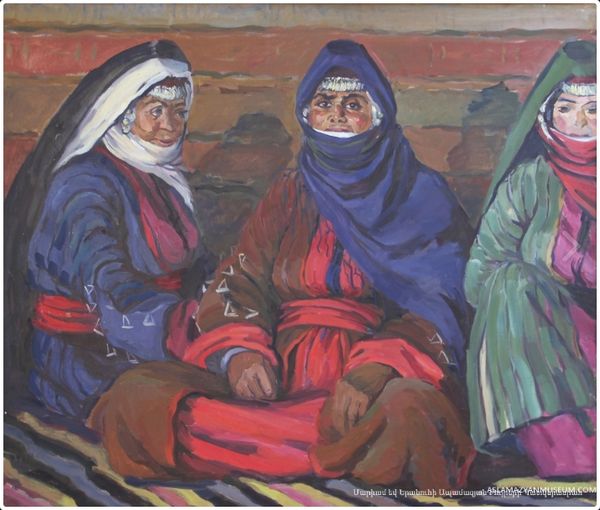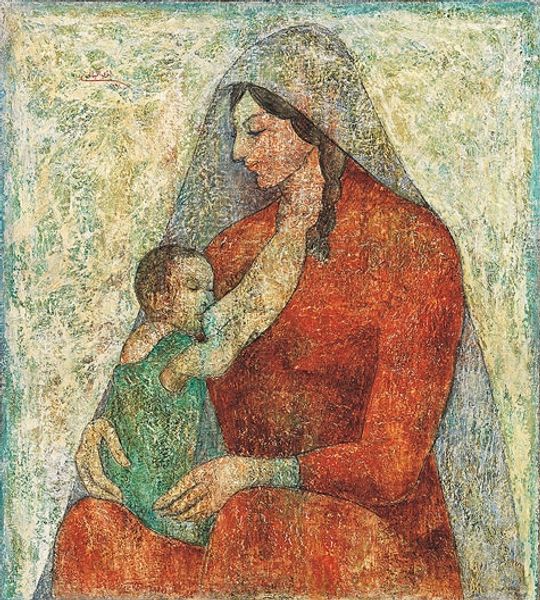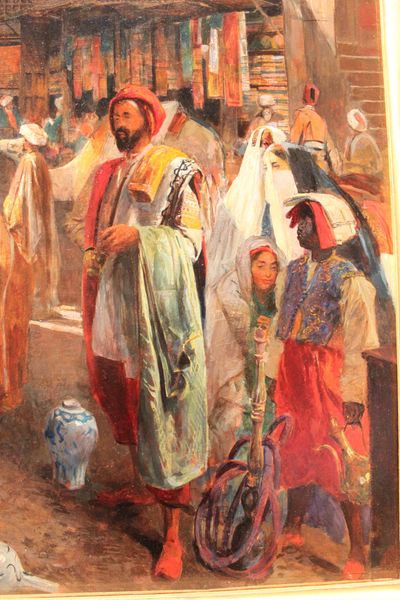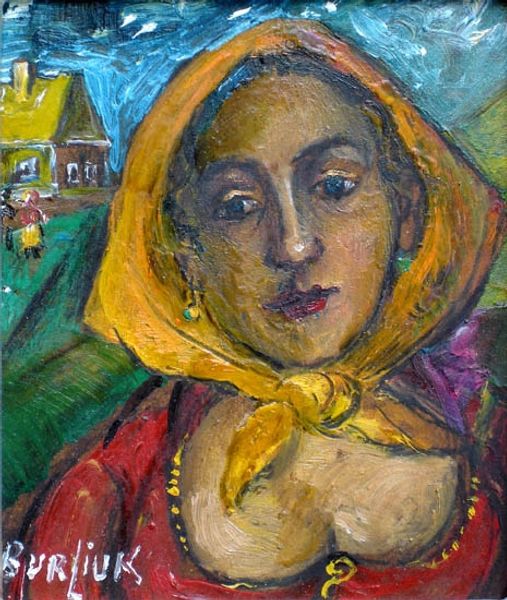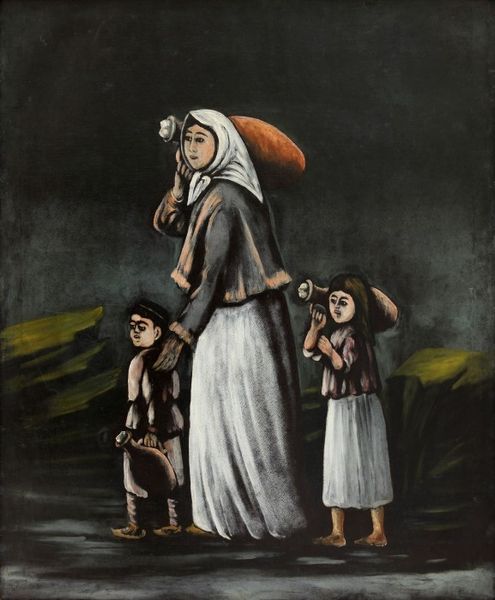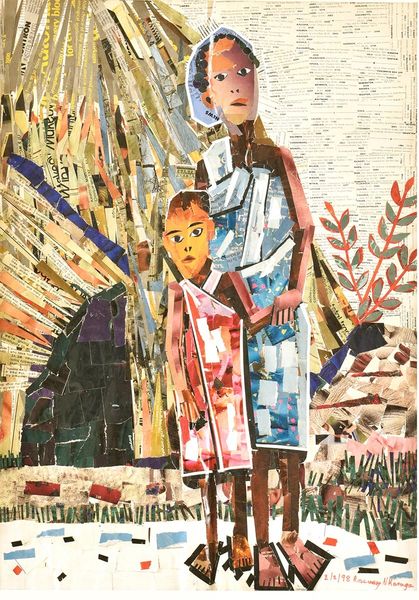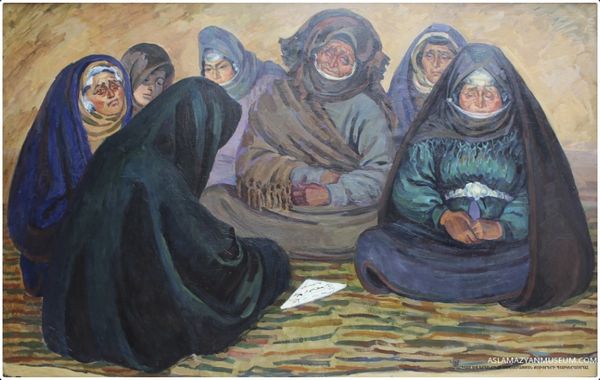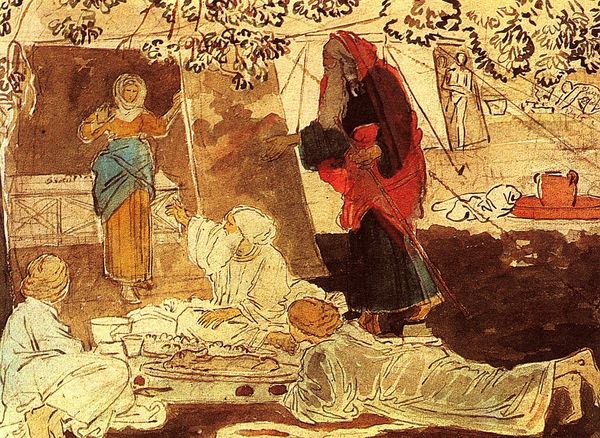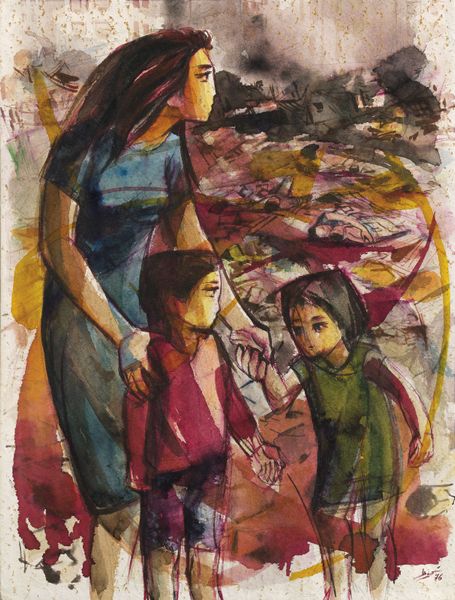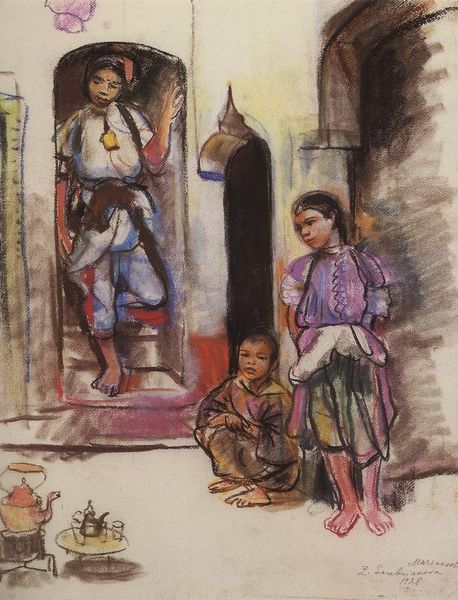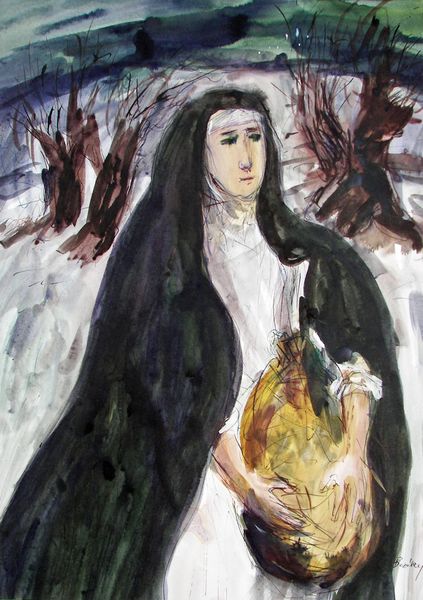
painting, oil-paint
#
portrait
#
narrative-art
#
painting
#
canvas painting
#
oil-paint
#
oil painting
#
group-portraits
#
portrait art
#
modernism
Copyright: Ismail Shammout,Fair Use
Editor: This oil on canvas, “Nahnou Bi Kheyr, Taminouna (We Are in Good Health, Reassure Us)” by Ismail Shammout, painted in 1976, has a somber and intimate feel. It looks like a family portrait inside what might be a tent. What draws your attention when you view this artwork? Curator: The materiality speaks volumes. Shammout used oil paint – a relatively accessible material, yet the thick, visible brushstrokes give the work an immediacy that belies its creation nearly a decade after the 1967 war. Look at how the figures are positioned. How does the artist’s hand depict the subjects' direct engagement with their displacement and hardship, yet maintain their dignity? Editor: That's interesting. I hadn't considered how the oil paint, something quite common, contributes to this feeling. The expressions are quite strong and full of concern. Curator: Exactly. Note how the backdrop includes other smaller pictures, perhaps relatives or lost homes. These aren't just images but tangible pieces that the displaced carry with them, making the camp walls into personal, portable museums. In that way, is Shammout highlighting the transition from a traditional art space to the refugee camp by making a portrait inside the ‘domestic space’ of a tent? Editor: Yes, that’s a powerful observation! I am now starting to think of the tent’s canvas itself as material, underscoring their transient existence. Curator: Precisely! And in their limited access to resources, do you see a conversation about forced minimalism and an intersection of survival and imposed living situations? Editor: Absolutely. Considering Shammout’s focus on the refugees’ material conditions adds layers of meaning to the group’s expressions. I will start to look into other portrait artists to examine this interesting parallel between a refugee’s portrait in a refugee camp. Thanks for this eye-opening way to interpret the work!
Comments
No comments
Be the first to comment and join the conversation on the ultimate creative platform.
